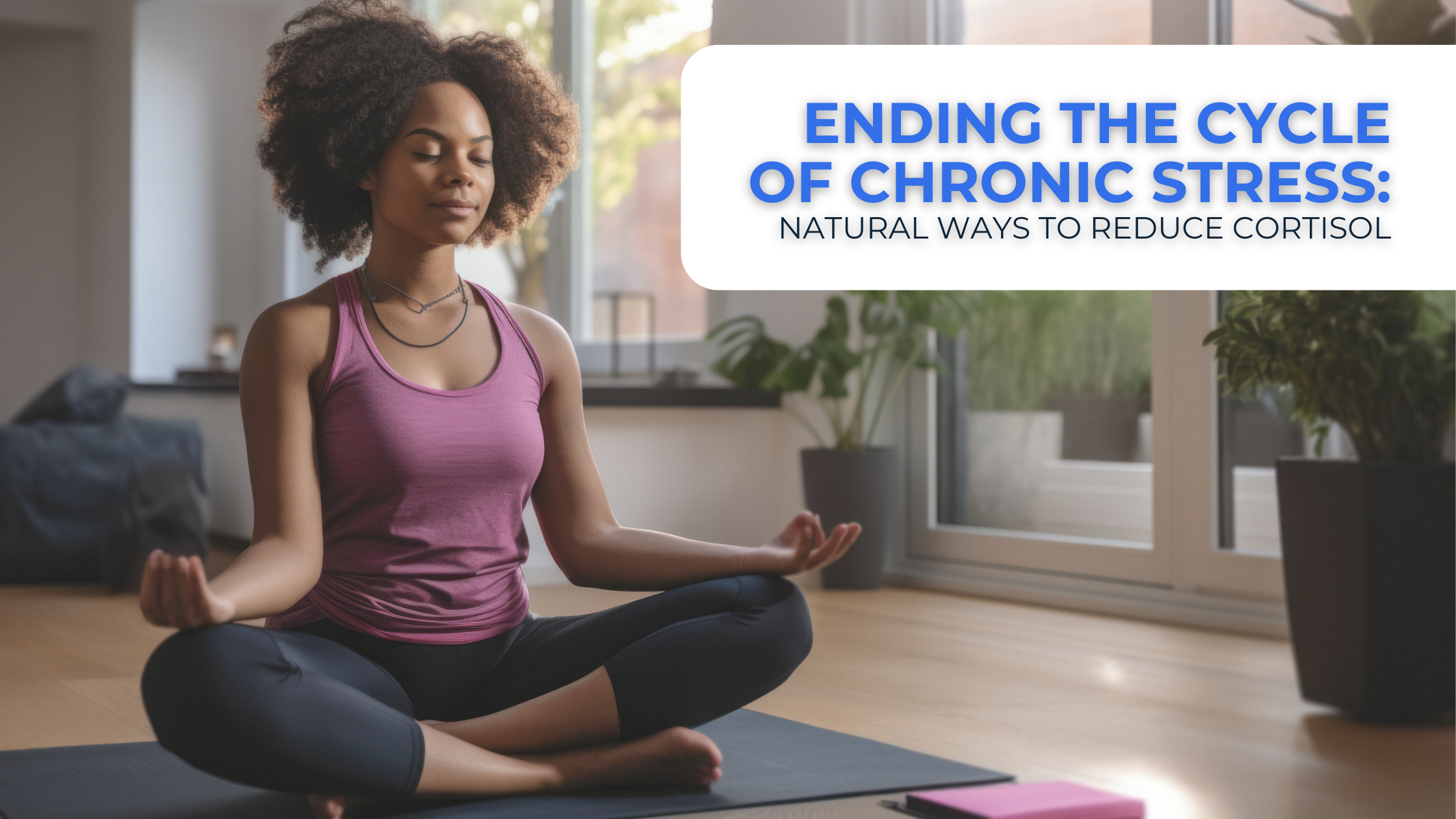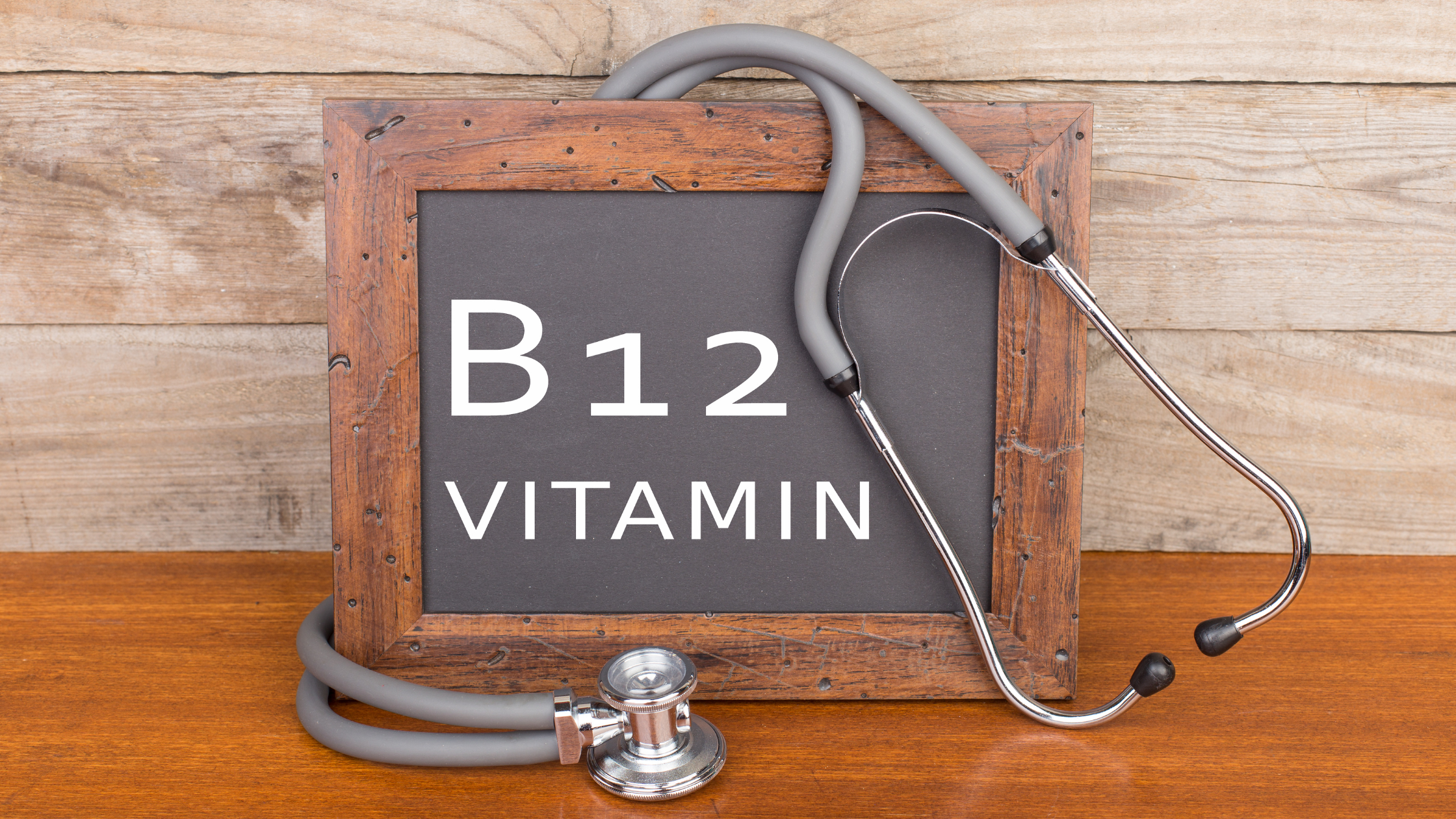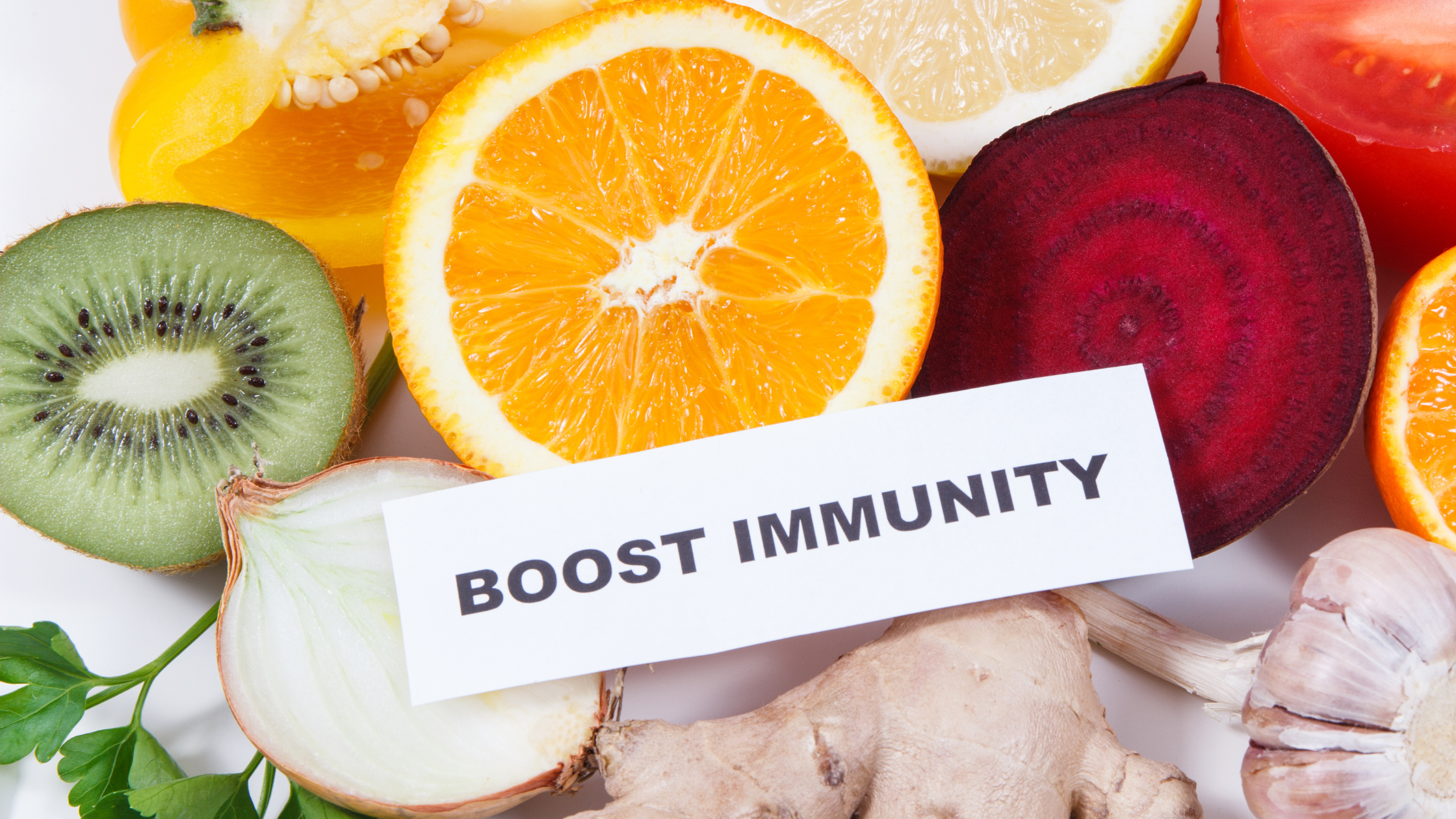
Ending the Cycle of Chronic Stress: Natural Ways to Reduce Cortisol
Learn six natural ways to help your patients reduce their cortisol levels
Life today is fast, there is minimal down time, and everyone is constantly on-the-go. This is sustainable, but only for a short period of time.
But, as you know, the good stress, known as eustress, which keeps us energized and motivated to make change and helps us overcome occasional obstacles and illness, can steadily build, becoming persistent chronic stress, or a state of distress. For so many of us, living with chronic stress has become an unfortunate part of modern everyday life.
As wellness practitioners, we witness more often than not, the negative effects of chronic stress as the body’s fight-or-flight response gets triggered all too often and over extended periods of time. Given the interconnectedness of mind, mood and body, chronic stress has far-reaching health impacts for the endocrine, digestive, respiratory, immune, musculoskeletal, nervous, and reproductive systems. And as we all know, core to this is the relationship between chronic stress and elevated cortisol levels.
While cortisol is a vital hormone, when it is persistently elevated, the symptoms of your client’s long-term stress may become diabetes, obesity and other metabolic conditions, immune system impairment, reproductive challenges, muscle and joint discomfort, chronic fatigue, or depression. 1
In this blog, we focus on ways to productively discuss stress with your patients and provide six natural ways to help reduce elevated cortisol.
Your Patients and Their Stress Levels
The subjective question, “Are you stressed?”, likely gets a lot of head nods, shoulder shrugs, half smiles, and teary-eyed responses. These reactions are mirrored in the American Psychological Association’s survey, Stress in AmericaTM 2023.
Surveying over 3,000 U.S. adults aged 18+, the results emphasize how common it has become for us to minimize stress: 2
- 67% of surveyed adults said their challenges aren’t “bad enough” to be stressed out about, saying other people have it worse.
- 47% of surveyed adults said they wish they had someone in their life who could help them manage their stress.
- 62% of surveyed adults said they don’t discuss their stress because they don’t want to worry or burden others.
- 24% of surveyed adults rated their stress between eight and 10 on a scale of one to 10 (one means little to no stress and 10 means a great deal of stress).
Sharing these statistics with your patients may help open a conversation about stress. When your patients understand that they’re not the only ones feeling stressed or overwhelmed, they may start talking about how they are really feeling.
Strategies for Talking with Patients About Stress
It’s not always easy to have an open and forthright conversation with your patients, particularly when they feel stressed or overwhelmed.
Consider these strategies when talking to your patients about stress: 1,3,4,5
- Stay present with your patients. Give them your undivided attention. Make it obvious that you want to listen and that you are interested in what they have to tell you. Practice active listening.
- Ask patients about their daily stressors and what their biggest stressors actually are. Ask about their work, home, and social lives. Remind them that they’re not alone in feeling stressed.
- Talk to your patients about the real-life health impacts of chronic stress and unhealthy coping mechanisms. Understanding that chronic stress may cause serious health conditions can encourage people to be more open and honest.
- Ask your patients about their digestive health, daily activity levels, eating habits, sleeping habits, alcohol use, social life, and overall sense of well-being. Their answers to these questions may help you explain how these are related to or influenced by chronic stress.
- Remind your patients that feelings of sadness, anger, helplessness, or fear are normal stress responses, and that you are here and available to help them.
- Depending on the patient, you may want to talk about cortisol and the potentially problematic impacts this hormone has on health and well-being in chronically stressed people. To keep this straightforward, focus on the fight-or-flight response, explaining that when the body is constantly in this state, cortisol levels are elevated, causing potential problems with whole-body health.
Explain to your patient that elevated cortisol levels and other stress hormones may put them at risk of developing digestive conditions, heart health conditions, headaches, sleep challenges, muscle tension and discomfort, weight gain, attention and memory challenges, and depression. And if these are the symptoms new patients come into your office with, definitely considering getting their cortisol levels evaluated.
Quite often, these are not easy conversations for you or your patients – but remember the more we can normalize talking about stress, the easier it is to raise awareness of what chronic stress is and why no one should be living with it.
Six Natural Ways to Reduce Cortisol
For your patients who have elevated cortisol due to chronic and persistent stress, these six natural ways may help them reduce their cortisol:
- Prioritize sleep. Consistent sleep challenges such as insomnia, shift work, and sleep apnea, may cause cortisol levels to increase. Research shows a correlation between lack of sleep, elevated cortisol, and metabolic disorders including obesity and type 2 diabetes. 6
Talk to your patients about establishing a sleep routine, including set sleep and wake times, good sleep hygiene, limiting mobile devices before bed, and sleeping in a dark room. 7 - Exercise regularly. Low or moderately intense exercise such as walking, yoga, aquafit, swimming, or cycling may help lower cortisol levels. Regular exercise has the potential to improve the body’s resilience to the stress response, trickling over into a reduced cortisol response as well. 8,9
Talk to your patients about establishing a regular exercise routine. This is a double-win for your patients, providing them with a stress outlet and lower cortisol levels. Emphasize that regular low- to moderate-intensity exercise is a great goal to set. 10 - Pay attention to thought patterns. Often people get into a cycle of negative or stressful thinking. Many people don’t realize that negative thought patterns may also indicate the need to boost B-vitamins in the diet. These essential stress-modulating, energy-generating nutrients, are water soluble and quickly used up during periods of distress. Furthermore, a recently proposed theory known as Generalized Unsafety Theory of Stress (GUTS) , proposes that prolonged physiological stress responses directly contribute to risk of chronic disease AND that these over-reactive stress responses can and do occur without actual, external stressors directly affecting personal feelings of safety. GUTS theory explains that even the perceived feelings of “generalized unsafety” can trigger the biochemical cascade of reactions involved with the stress response. 11, 12
All that being said, talk to your patients about mindfulness and how to recognize stress-inducing thoughts, and learning to let these thoughts go without passing judgment or carrying on an internal dialogue about them. Addressing the underlying causes associated with negative thought patterns may help reduce muscle tension, lower the heart rate, and overall stress levels. 13,14 - Go outside. Fresh air, trees, birds, and the sounds of nature may help lower cortisol levels and associated stress. Forest bathing involves spending time in nature, breathing forest air, and slowing down. Research reinforces the therapeutic effects of being in nature and how this may contribute to lower cortisol levels. 15
Talk to your patients about their access to nature and if this is doable, suggest forest bathing. Emphasize that forest bathing is the opposite of hiking. Depending on the weather and the forest conditions, people may want to simply stand and look up, taking in the tree canopy, sky, leaves, and sounds or they may want to sit on a fallen tree or dry patch of ground, close their eyes, and listen to the forest. - Laugh. The phrase, “laughter is the best medicine”, may hold true for lowering cortisol and stress levels. Research into the health benefits of laughter shows that having a good chuckle releases feel-good endorphins and limits the release of cortisol. 17,18
Talk to your patients about spending time having fun. Watching a funny a movie or series, reading funny books, listening to entertaining and light-hearted podcasts, spending time playing with a cat or dog, hanging out with others who like to have fun, laugh, and relax, or doing whatever it is that make them laugh out loud. - Breathe deep. Many wellness practitioners like yourself have explored the stress reducing benefits of yoga, which includes pranayama, where the breath is intentionally controlled in different styles and lengths to improve oxygenation of the brain and body, and enhancing feelings of wellbeing.
Taking deep breaths helps engage the parasympathetic nervous system, helping to lower cortisol levels. Often when people are stressed, they breathe shallowly, and do not fully engage their diaphragms and breathe into their belly. 19,20
Talk to your patients about benefits and resources for them to learn more about the practice of deep belly breathing, or better yet, yoga, pranayama, and mediation. Research indicates that yoga, including pranayama and meditation appears to be associated with lower cortisol levels and thus, an “anti-stress” effect via the hormone superhighway known as the endocrine system’s HPA axis. 21
For those clients new to deep belly breathing, suggest they lie flat on the floor, placing one hand on their lower abdomen, close their eyes, and breathe deeply through their nose focusing on expanding their belly and feeling their hand raise, hold the breath, and then exhale slowly through the mouth.
Thank you for making the time to review evidence-based suggestions and natural ways for your patients to begin to recognize their stress, feel comfortable talking about it, and most importantly, ready to do the personal work to access a greater sense of vitality. Encourage your patients to be gentle with themselves as they work to incorporate these six natural ways to reduce cortisol into their lifestyle.
April is Stress Awareness Month, and we urge you to share this blog with your colleagues. The more people talk about stress and its health impacts - the sooner we’re on a path of reducing chronic stress.
‡ The products and claims made about specific products on or through this Site have not been evaluated by the United States Food and Drug Administration and are not approved to diagnose, treat, cure or prevent disease.
‡ This Site is not intended to provide diagnosis, treatment, or medical advice. Products, services, information and other content provided on this Site, including information that may be provided on this Site directly or by linking to third-party websites are provided for informational purposes only. Please consult accredited healthcare professional organizations, evidence-based herbal monographs, and published clinical research regarding any medical or health related diagnosis or treatment options.
References
- American Psychological Association. “Stress effects on the body.” https://www.apa.org/topics/stress/body. Accessed April 2, 2024
- American Psychological Association. “Stress in AmericaTM 2023: A nation grappling with psychological impacts of collective trauma.” https://www.apa.org/news/press/releases/2023/11/psychological-impacts-collective-trauma. Accessed April 2, 2024
- Roche, Rosellen MD, PhD. et al. “Talking With Patients About Stress.” https://cardi-oh.org/assets/Cardi-OH-Talking-With-Patients-About-Stress.pdf. Accessed April 2, 2024
- Hardavella, Georgia. et al. “Top tips to deal with challenging situations: doctor-patient interactions.” Breathe (Sheff). 2017 Jun;13(2):129-135. https://www.ncbi.nlm.nih.gov/pmc/articles/PMC5467659/.
- Mariotti, Agnese. “The effects of chronic stress on health: new insights into the molecular mechanisms of brain-body communication.” Future Sci OA. 2015 Nov 1;1(3):FSO23. https://www.ncbi.nlm.nih.gov/pmc/articles/PMC5137920/.
- Hirotsu, Camila. et al. “Interactions between sleep, stress, and metabolism: From physiological to pathological conditions.” Sleep Sci. 2015 Nov;8(3):143-52. https://www.ncbi.nlm.nih.gov/pmc/articles/PMC4688585/.
- Centers for Disease Control and Prevention. “Tips for Better Sleep.” https://www.cdc.gov/sleep/about_sleep/sleep_hygiene.html. Accessed April 2, 2024
- Harvard Health Publishing. “Exercising to relax.” https://www.health.harvard.edu/staying-healthy/exercising-to-relax. Accessed April 2, 2024
- De Nys, Len. et al. “The effects of physical activity on cortisol and sleep: A systematic review and meta-analysis.” Psychoneuroendocrinology. 2022 Sep;143:105843. https://pubmed.ncbi.nlm.nih.gov/35777076/.
- Davidson, Katey et al. “11 Natural Ways to Lower Your Cortisol Levels.” Healthline.com. https://www.healthline.com/nutrition/ways-to-lower-cortisol. Accessed April 2, 2024
- Zielińska M et al. “Dietary Nutrient Deficiencies and Risk of Depression (Review Article 2018-2023).” Nutrients. 2023 May 23;15(11):2433. https://www.ncbi.nlm.nih.gov/pmc/articles/PMC10255717/
- Brosschot JF. et al. “Generalized Unsafety Theory of Stress: Unsafe Environments and Conditions, and the Default Stress Response.” Int J Environ Res Public Health. 2018 Mar 7;15(3):464. https://www.ncbi.nlm.nih.gov/pmc/articles/PMC5877009/
- Turakitwanakan, Wanpen. et al. “Effects of mindfulness meditation on serum cortisol of medical students.” J Med Assoc Thai. 2013 Jan;96 Suppl 1:S90-5. https://pubmed.ncbi.nlm.nih.gov/23724462/.
- Sayadi, Ahmed Reza. et al. “The effect of mindfulness-based stress reduction (MBSR) training on serum cortisol levels, depression, stress, and anxiety in type 2 diabetic older adults during the COVID-19 outbreak.” J Med Life. 2022 Dec;15(12):1493-1501. https://www.ncbi.nlm.nih.gov/pmc/articles/PMC9884344/.
- Park, Bum Jin. et al. “The physiological effects of Shinrin-yoku (taking in the forest atmosphere or forest bathing): evidence from field experiments in 24 forests across Japan.” Environ Health Prev Med. 2010 Jan;15(1):18-26. https://www.ncbi.nlm.nih.gov/pmc/articles/PMC2793346/.
- Patani, Vedika and Carly Smith, BS, MPH(c). “The Unexpected Health Benefits of Forest Bathing.” Stanford Lifestyle Medicine. 2023. https://longevity.stanford.edu/lifestyle/2023/10/03/the-difference-between-hiking-and-forest-bathing/. Accessed April 2, 2024
- Kramer, Caroline Kaercher and Cristiane Bauermann Leitao. “Laughter as medicine: A systematic review and meta-analysis of interventional studies evaluating the impact of spontaneous laughter on cortisol levels.” PLoS One. 2023 May 23;18(5):e0286260. https://www.ncbi.nlm.nih.gov/pmc/articles/PMC10204943/.
- Mayo Clinic Staff. “Stress relief from laughter? It’s no joke.” Mayo Clinic. https://www.mayoclinic.org/healthy-lifestyle/stress-management/in-depth/stress-relief/art-20044456. Accessed April 2, 2024
- Ma, Xiao. et al. “The Effect of Diaphragmatic Breathing on Attention, Negative Affect and Stress in Healthy Adults.” Front Psychol. 2017 Jun 6;8:874. https://www.ncbi.nlm.nih.gov/pmc/articles/PMC5455070/.
- Harvard Health Publishing. “Relaxation techniques: Breath control helps quell errant stress response.” https://www.health.harvard.edu/mind-and-mood/relaxation-techniques-breath-control-helps-quell-errant-stress-response. Accessed April 2, 2024
- Thirthalli J. et al. “Cortisol and antidepressant effects of yoga.” Indian J Psychiatry. 2013 Jul;55(Suppl 3):S405-8. https://www.ncbi.nlm.nih.gov/pmc/articles/PMC3768222/
Jenny Perez is an herbal educator, researcher, and writer who has been immersed in the field of nutrition and botanical medicine for more than 20 years. Jenny has created curriculum, content, and educational materials for Quantum Nutrition Labs, Premier Research Labs, the American Botanical Council, and Bastyr University’s Botanical Medicine Department where she was Adjunct Faculty, Herb Garden Manager, and Director of the Holistic Landscape Design certificate program.









